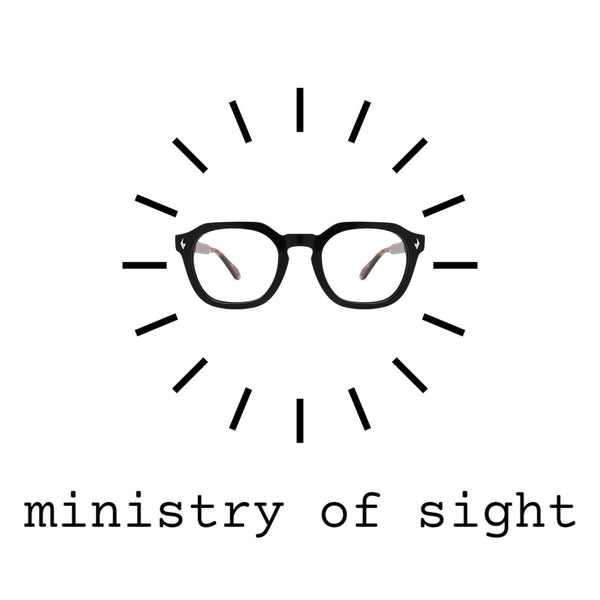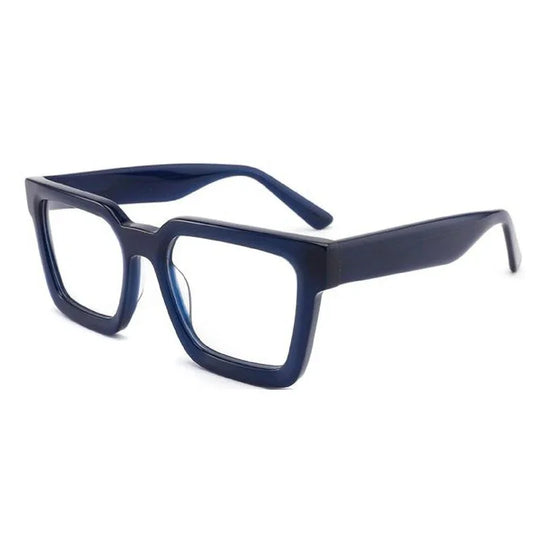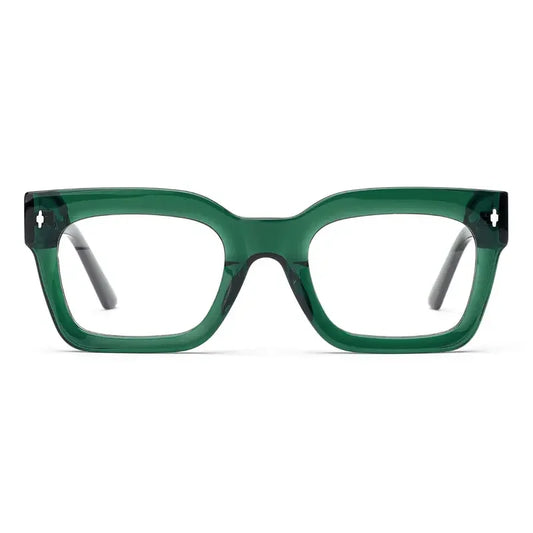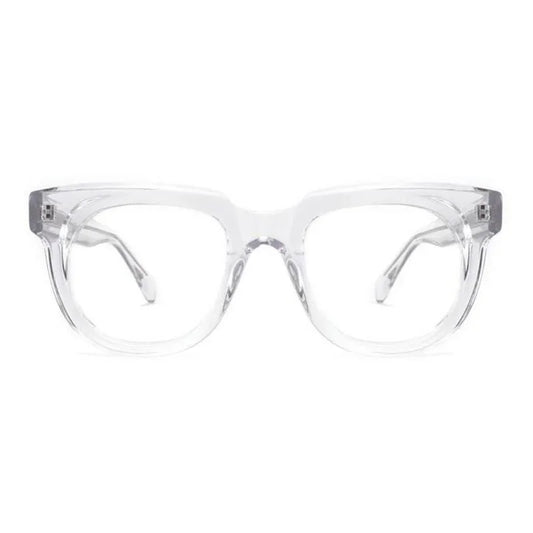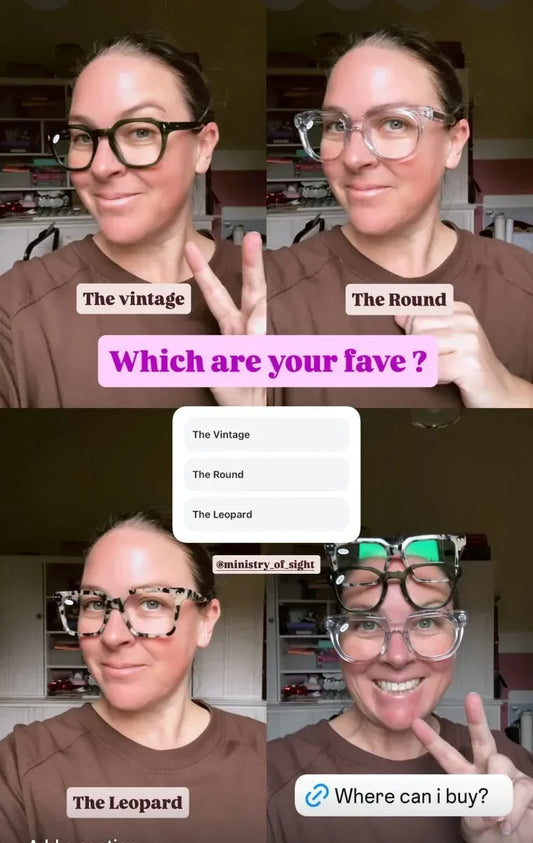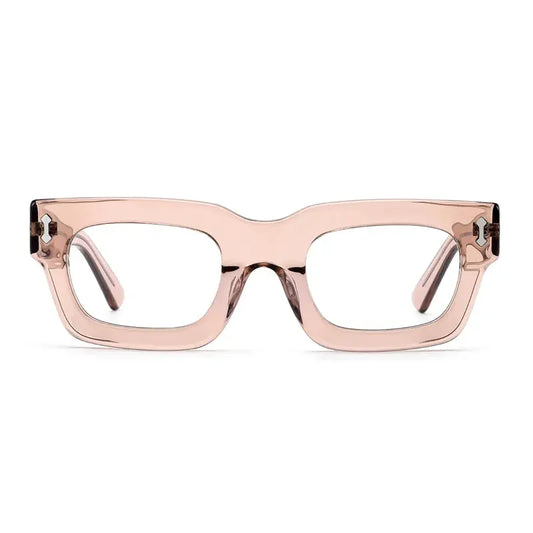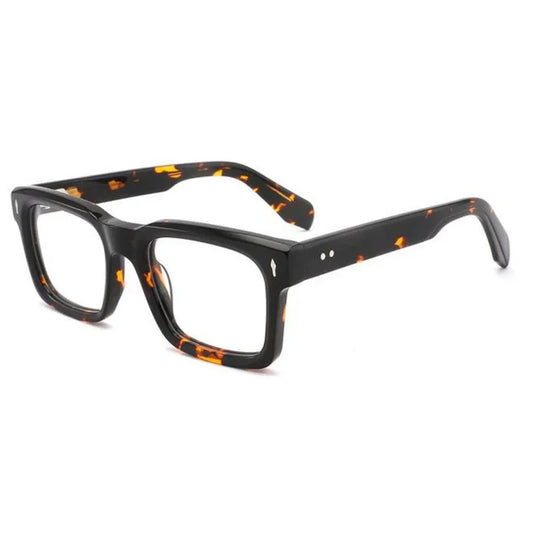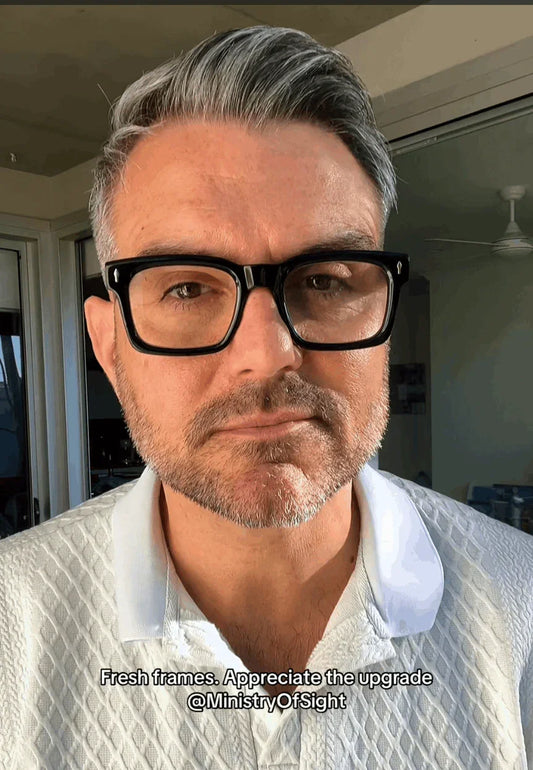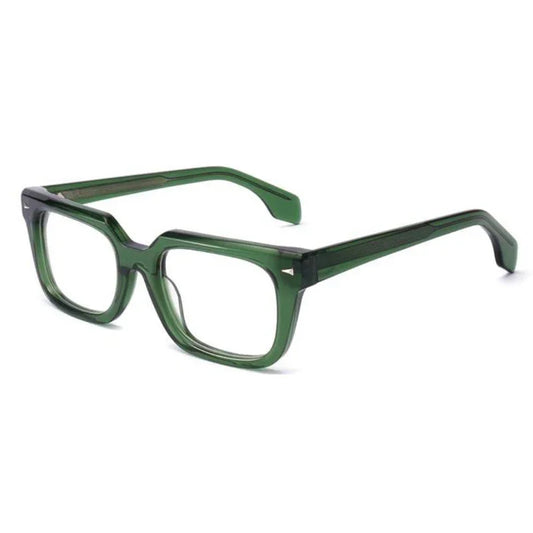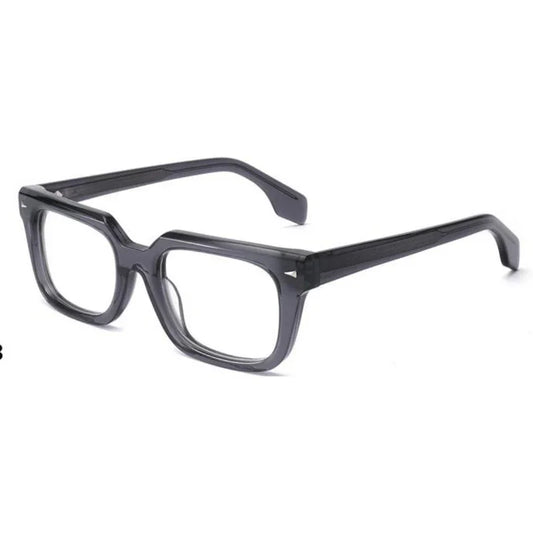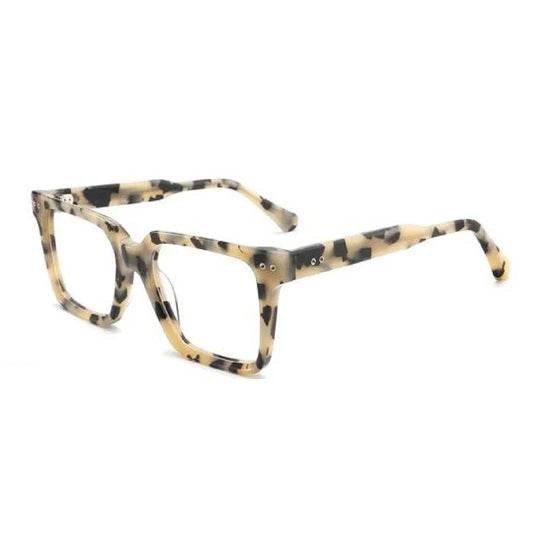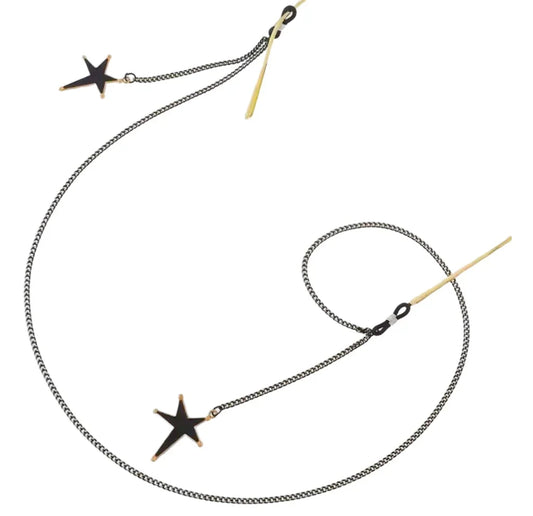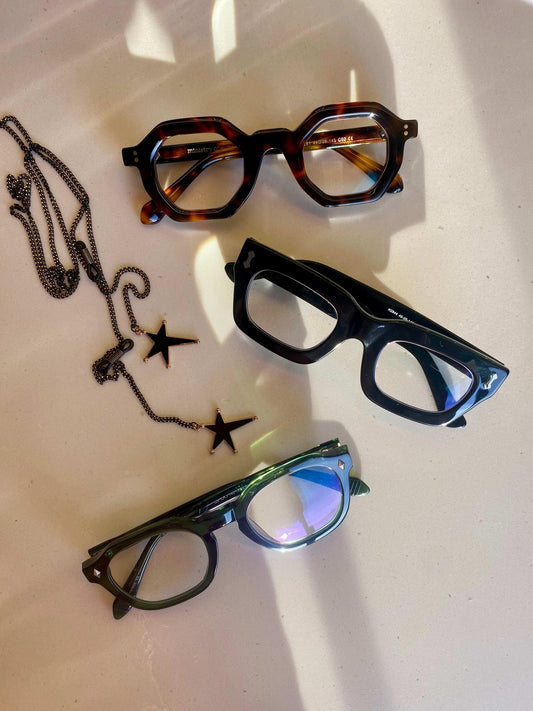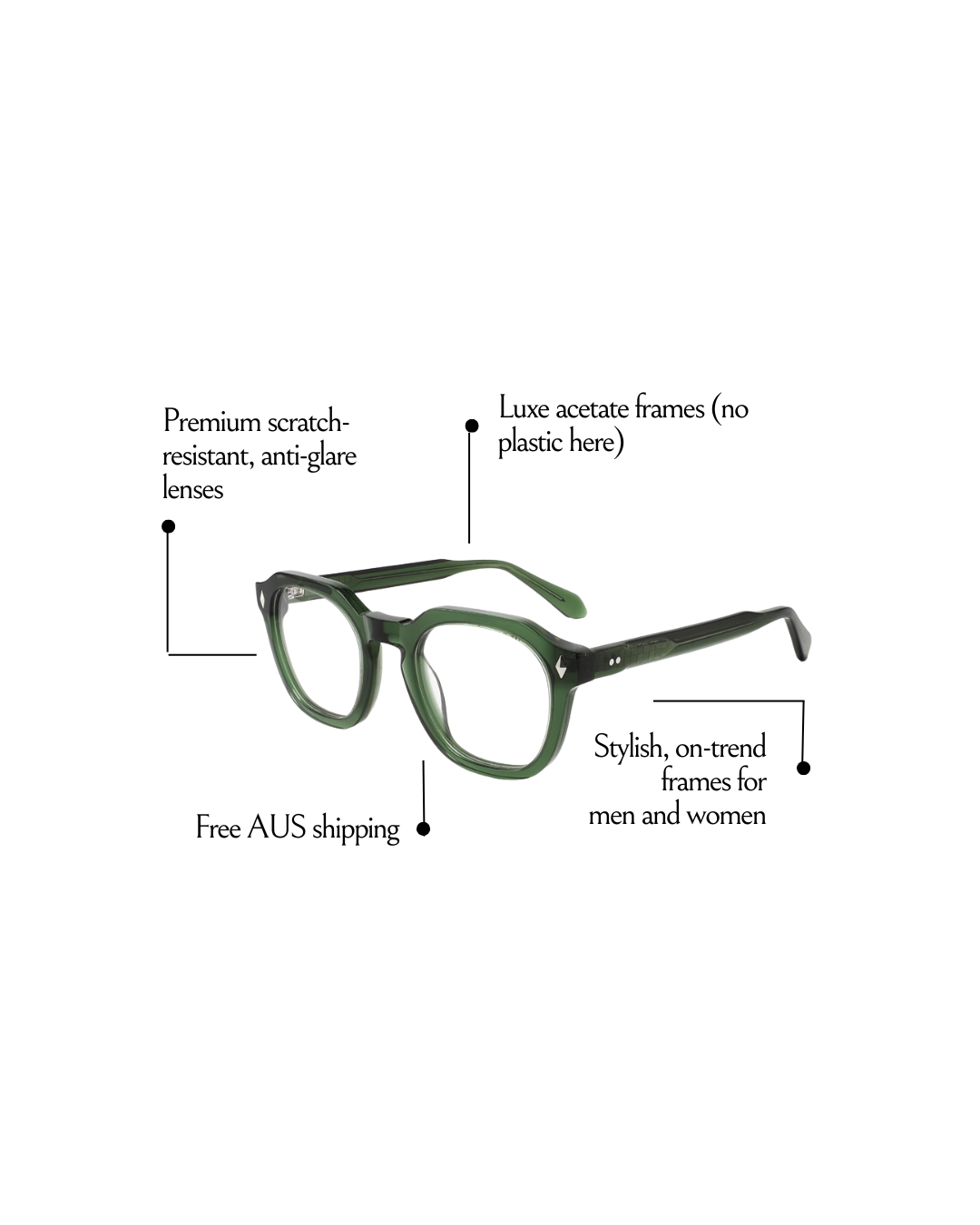
Essential Reading Glasses Style Tips for Men Over 40
Choosing reading glasses can feel overwhelming. The options seem endless, yet so many men end up with frames that never quite look right. But most blokes have no idea that your face shape is the single biggest factor in finding glasses that suit you. Once you know how to match frames to your features, picking the perfect pair becomes way easier than you might think.
Table of Contents
- Step 1: Assess Your Face Shape
- Step 2: Choose The Right Frame Material
- Step 3: Select Appropriate Lens Types
- Step 4: Match Frames With Personal Style
- Step 5: Verify Comfort And Fit
- Step 6: Incorporate Accessories For A Complete Look
Quick Summary
| Key Point | Explanation |
|---|---|
| 1. Identify Your Face Shape | Assess the proportions of your forehead, cheekbones, and jawline to determine your face shape for optimal frame selection. |
| 2. Choose Suitable Frame Materials | Select frame materials like metal, acetate, or composites based on comfort, durability, and your lifestyle needs. |
| 3. Opt for Appropriate Lens Types | Consider multifocal or single vision lenses tailored to your vision requirements, enhancing daily functionality and comfort. |
| 4. Match Frames with Personal Style | Align your frame choices with your professional and personal style to express confidence and enhance your overall look. |
| 5. Ensure Proper Fit and Comfort | Validate the fit of the glasses across key contact points; comfort is essential for daily wear and prolonged use. |
Step 1: Assess Your Face Shape
Selecting the perfect reading glasses starts with understanding your unique facial geometry. Your face shape is more than just a physical characteristic—it’s a critical factor in choosing frames that will enhance your personal style and complement your natural features.
To determine your face shape, you’ll want to carefully examine the overall proportions and angles of your face. Stand in front of a mirror with your hair pulled back and take a clear, objective look. Focus on the width of your forehead, cheekbones, and jawline, as these are key indicators of your fundamental face shape.
Common Face Shape Categories
Men typically fall into several primary face shape classifications: round, square, oval, rectangular, and triangular. Each shape has distinct characteristics that influence frame selection. For round faces, angular frames create visual contrast and add definition. Square faces benefit from softer, rounded frames that help balance strong jaw lines. Oval faces are considered the most versatile, with the ability to pull off multiple frame styles.
To precisely determine your face shape, measure the width of your forehead, cheekbones, and jawline. If your forehead and jawline are roughly the same width with softer angles, you likely have a round face. Sharp, equal width measurements across these areas typically indicate a square face. Rectangular faces will show longer proportions, while triangular faces feature a wider jawline compared to the forehead.
Pro tip: Use a flexible measuring tape or a piece of string to help you accurately compare these facial measurements. Take your time and be patient with this process. Remember that many men have faces that blend characteristics from multiple shape categories, so don’t stress about fitting perfectly into one specific type.
Once you’ve identified your primary face shape, you’re ready to move forward in selecting reading glasses that will not just improve your vision but also elevate your personal aesthetic. The right frames can transform your look, adding sophistication and complementing your unique facial structure.
Step 2: Choose the Right Frame Material
With your face shape now identified, selecting the right frame material becomes your next crucial decision in finding reading glasses that are both functional and stylish. The material of your frames impacts not just appearance, but also comfort, durability, and overall wearing experience.
Modern Materials for the Discerning Gentleman
For men over 40, three primary frame materials stand out: metal, acetate (high-quality plastic), and lightweight composites. Metal frames offer a classic, professional look with exceptional durability. Stainless steel and titanium provide strength without significant weight, making them perfect for daily wear. Titanium frames are particularly noteworthy for their hypoallergenic properties, which is ideal for men with sensitive skin or metal allergies.
Acetate frames represent a more contemporary option, delivering vibrant color possibilities and remarkable lightweight comfort. These frames allow for more creative design expressions while maintaining a sophisticated aesthetic. Composite materials blend the best qualities of metal and plastic, offering flexibility, resilience, and a modern appearance that suits professional and casual environments.
Consider your lifestyle and daily activities when selecting frame materials. If you’re frequently outdoors or engage in physical activities, opt for frames with enhanced impact resistance. Professionals who spend significant time in office environments might prefer sleek metal frames that communicate precision and reliability. Read more about understanding reading glasses frame materials to make an informed choice that matches your personal style and functional needs.
Texture and finish also play significant roles in material selection. Matte finishes provide a subtle, understated look, while polished surfaces offer a more refined, elegant appearance. Some men prefer frames with subtle texture variations that add depth and visual interest to their eyewear.
Remember that your reading glasses are more than a vision correction tool—they’re an extension of your personal style. Take time to handle different materials, feel their weight, and assess how they complement your facial features. The right material will not just improve your vision but also boost your confidence and professional image.
The following table compares common reading glasses frame materials discussed in the article, summarising their key benefits and typical suitability for different preferences.
| Frame Material | Key Benefits | Typical Style/Application |
|---|---|---|
| Metal | Durable, lightweight, hypoallergenic (especially titanium); professional appearance | Ideal for office and day-to-day classic style |
| Acetate | Lightweight, vibrant colours, creative design options | Great for those wanting comfort and contemporary looks |
| Composites | Blend of metal and plastic for flexibility and resilience | Suitable for modern, active lifestyles |
| Stainless Steel | Strength with low weight; rust-resistant | Professional, durable everyday wear |
| Titanium | Very lightweight, hypoallergenic, strong | Suited for sensitive skin and those valuing premium comfort |
| Polycarbonate/Trivex (lenses) | Impact resistance, UV protection (mainly for lenses, referenced in lens types) | Good for outdoor and active users |
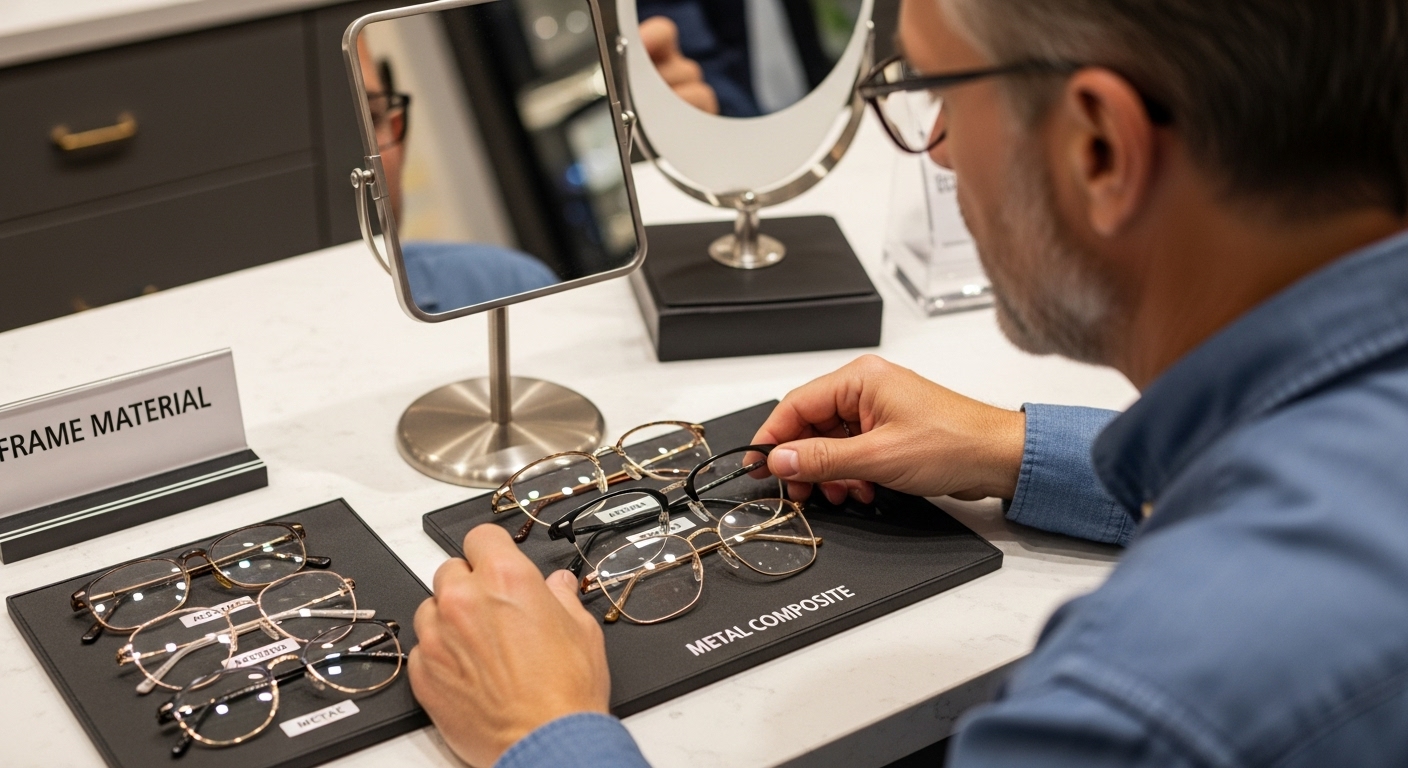
Step 3: Select Appropriate Lens Types
Choosing the right lens type is more than a visual necessity—it’s about maintaining your lifestyle and comfort as you navigate the changing vision requirements that come with age. For men over 40, lens selection becomes a strategic decision that impacts daily functionality and personal style.
Understanding Modern Lens Technologies
Multifocal and progressive lenses represent the most sophisticated solution for men experiencing age-related vision changes. These intelligent lens designs provide seamless vision correction across different distances—near, intermediate, and far—without the traditional visible line separating reading and distance prescriptions. Unlike traditional bifocals, progressive lenses offer a smooth transition between vision zones, allowing natural head and eye movements.
Single vision reading lenses remain an excellent option for those with straightforward near-vision needs. If you primarily require glasses for reading books, tablets, or working on computers, these lenses provide crisp, focused vision at close to intermediate ranges. Read more about understanding lens types for reading glasses to make an informed decision tailored to your specific visual requirements.
Advanced lens materials have transformed vision correction. High-index lenses offer exceptional thinness and lightweight comfort, particularly beneficial for stronger prescriptions. These lenses reduce the traditional bulkiness associated with thick glasses, providing a sleeker, more contemporary appearance. Polycarbonate and Trivex lens materials deliver additional advantages like superior impact resistance and built-in ultraviolet protection—crucial considerations for active men who spend time outdoors.
Consider your professional environment and personal activities when selecting lens types. Digital professionals might benefit from specialized lens coatings that reduce eye strain from prolonged screen exposure. Blue light filtering technologies can mitigate potential eye fatigue caused by extensive computer and smartphone use.
Ultimately, your lens selection should align with your visual needs, lifestyle, and personal aesthetic. Consult with an eye care professional who can provide personalized recommendations based on a comprehensive vision assessment. The right lens type will not just correct your vision but enhance your daily visual experience and overall confidence.
Step 4: Match Frames with Personal Style
Your reading glasses are more than a vision correction tool—they’re a powerful style statement that reflects your personal brand and professional identity. Matching frames with your individual style requires thoughtful consideration of your lifestyle, professional environment, and personal aesthetic preferences.
Professional vs Casual Style Considerations
For men over 40, frame selection becomes a nuanced art of balancing functionality with personal expression. Professional environments typically call for more understated, classic frame designs. Think sleek rectangular or rimless frames in neutral tones like deep navy, charcoal, or tortoiseshell. These styles communicate sophistication without drawing excessive attention. Corporate settings often reward subtle elegance, so frames that complement your suit or business attire become critical style investments.
Casual settings offer more creative freedom. Bold frames with interesting color combinations or slightly unconventional shapes can showcase personality. Rectangular frames with subtle color accents, rounded frames with matte finishes, or frames featuring interesting temple designs can transform your reading glasses from a functional necessity into a fashion accessory. Explore our guide to glasses frame styles to discover how different designs can elevate your look.
Personal Aesthetic and Confidence
Your frames should feel like a natural extension of your personality. Confident men understand that glasses are not just about vision—they’re about self-expression. If you have a classic, timeless wardrobe, choose frames that mirror that aesthetic. Prefer a more modern, edgy style? Consider frames with contemporary design elements like asymmetrical shapes or minimalist metallic finishes.
Consider your typical daily activities when selecting frame styles. Active professionals might prefer lightweight, durable frames that transition seamlessly between office and outdoor environments. Creative professionals can experiment with more distinctive frame designs that reflect their innovative spirit.
Remember that comfort plays a significant role in style confidence. The most stylish frames are those you feel completely at ease wearing. Try multiple styles, observe how they interact with your facial features, and trust your instincts. Your reading glasses should not just correct your vision—they should make you feel more like yourself, enhancing both your look and your confidence.
Step 5: Verify Comfort and Fit
The perfect reading glasses transcend aesthetics and prescription—they must feel like a natural extension of yourself. Comfort and fit are critical elements that determine whether your glasses will be a daily companion or an occasional accessory gathering dust in a drawer.
Physical Fit Assessment Techniques
Proper frame fit involves three critical contact points: the bridge of your nose, your temples, and the arms of the frames. When trying on glasses, observe how they rest on your face. They should sit symmetrically without sliding down your nose or creating pressure points. The frames’ width should align closely with your face’s natural width, with the arms extending straight back without pushing outward or pinching.
Weight distribution plays a significant role in long-term comfort. Lightweight frames with flexible hinges can accommodate subtle facial movements and provide all-day wearability. Pay attention to how the glasses feel after wearing them for 15-20 minutes. Slight initial discomfort is normal, but persistent pressure or sliding indicates an improper fit.
Nose pad adjustments offer another critical comfort dimension. Adjustable silicone or metal nose pads allow customization to your unique facial structure. When fitted correctly, glasses should rest approximately 10-15 millimetres from your cheeks, creating a comfortable gap that prevents constant contact and potential skin irritation.
Check for balanced weight distribution by performing simple movement tests. Tilt your head forward, shake it gently side to side, and observe whether the glasses remain stable. Glasses that shift significantly during movement require professional adjustment.
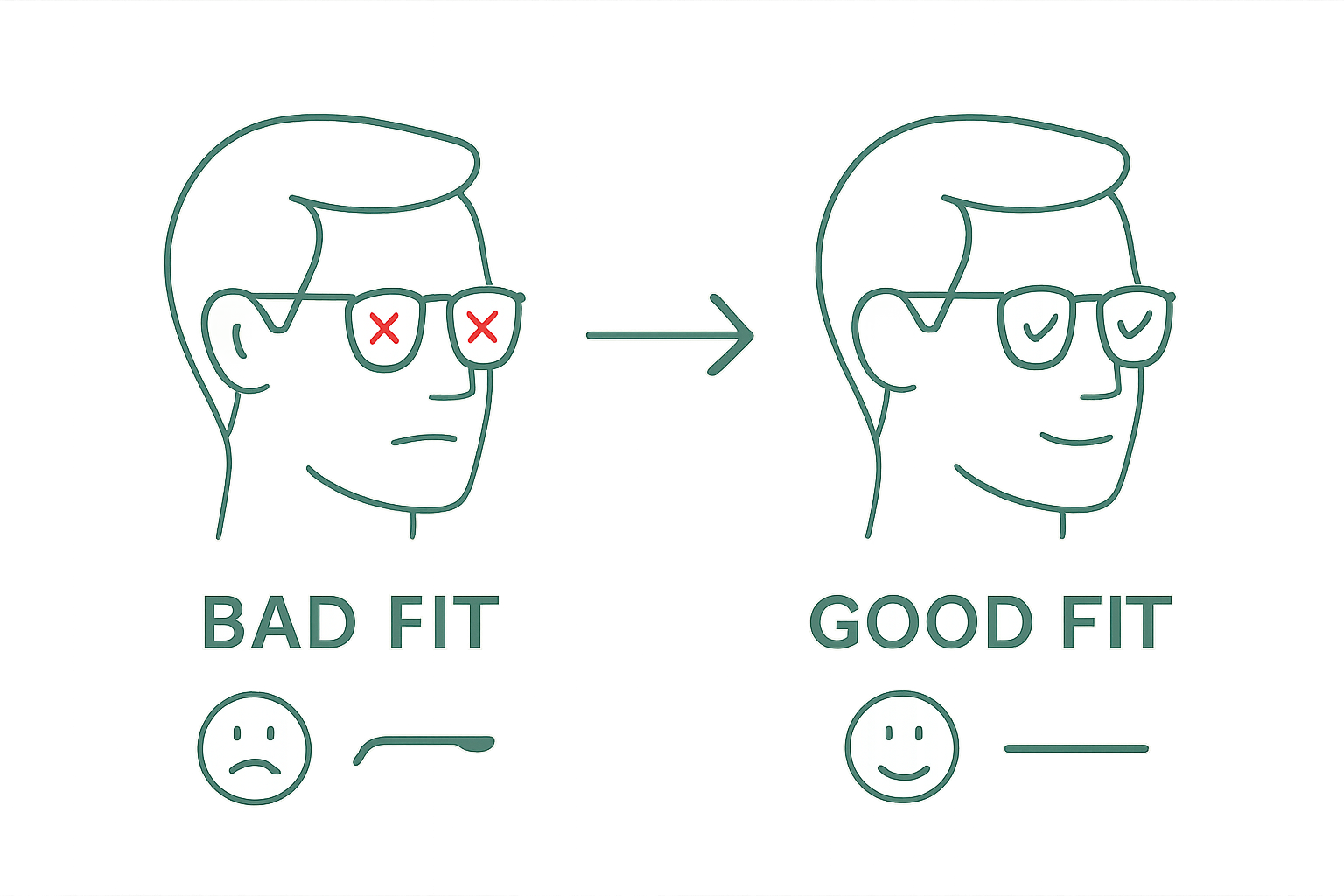 Many opticians offer complimentary fitting services to ensure your reading glasses provide optimal comfort and functionality.
Many opticians offer complimentary fitting services to ensure your reading glasses provide optimal comfort and functionality.
Learn more about achieving the perfect glasses fit to understand nuanced fitting techniques. Remember that finding the right reading glasses is a personal journey. What works perfectly for one man might feel uncomfortable for another. Trust your instincts, prioritize comfort, and don’t hesitate to request multiple adjustments until you find your ideal fit.
This table summarises physical fit checkpoints and comfort considerations for reading glasses, making it easy to assess and optimise the everyday wearing experience described in the content.
| Fit Aspect | What to Check | Purpose/Result |
|---|---|---|
| Bridge alignment | Frames rest comfortably on nose, without sliding or pinching | Prevents discomfort and frequent adjustment |
| Temple fit | Arms extend straight, do not push outward or pinch | Ensures frames stay securely in place |
| Frame width | Width is similar to face, not too wide or narrow | Maintains balanced look and fit |
| Nose pads | Adjustable pads provide even support, no skin irritation | Customises fit for comfort |
| Weight distribution | Lightweight, no pressure points after 15-20 minutes | Enables all-day comfort |
| Stability in motion | Frames stay put during head movement or tilting | Avoids distractions and slippage |
Step 6: Incorporate Accessories for a Complete Look
Accessorizing your reading glasses elevates them from a mere vision correction tool to a sophisticated style statement. For men over 40, thoughtful accessories can transform functional eyewear into a refined personal expression that communicates confidence and attention to detail.
Essential Functional Accessories
Protective cases represent more than storage solutions—they’re an extension of your personal style. Opt for slim, leather cases in neutral tones like deep brown or black that complement professional attire. Hard cases with elegant textures provide superior protection for high-quality glasses, while soft microfiber pouches offer convenient lightweight alternatives for casual settings.
Chain and cord accessories have evolved beyond traditional perceptions. Modern designs feature premium materials like leather-wrapped metal chains or minimalist magnetic connectors that allow glasses to hang elegantly when not in use. These accessories prove particularly useful for professionals who frequently transition between reading documents and engaging in conversations.
Cleaning accessories are another critical consideration. Microfiber cleaning cloths with subtle, sophisticated designs can be both functional and stylish. Select cloths that fold compactly and resist showing dirt, allowing you to maintain pristine lenses throughout the day. Some modern cleaning kits include compact spray solutions designed for quick, discrete lens maintenance.
Discover how to style reading glasses naturally and integrate accessories seamlessly into your personal aesthetic. Consider your professional environment and personal lifestyle when selecting accessories. A tech executive might prefer sleek, minimalist accessories, while a creative professional could experiment with more distinctive, artisanal designs.
Remember that accessories should enhance, not overwhelm. The goal is creating a cohesive look that feels authentic to your personal style. Choose pieces that feel comfortable, functional, and reflective of your individual personality. Your reading glasses and their accessories are a subtle yet powerful way to communicate sophistication, practicality, and self-assurance.
Elevate Your Everyday Look with Reading Glasses That Fit Your Style
Have you discovered how the right reading glasses bring confidence and clarity after 40? Many men struggle with outdated frames or uncomfortable fits, missing out on eyewear that truly matches their personality and face shape. If you have found it hard to blend comfort, quality, and a stylish look as you step into a new decade, you are not alone. Our collection of Stylish Reading Glasses for Men and Women helps you turn essential advice – from choosing frames for your face to selecting premium materials – into your best-dressed accessory.
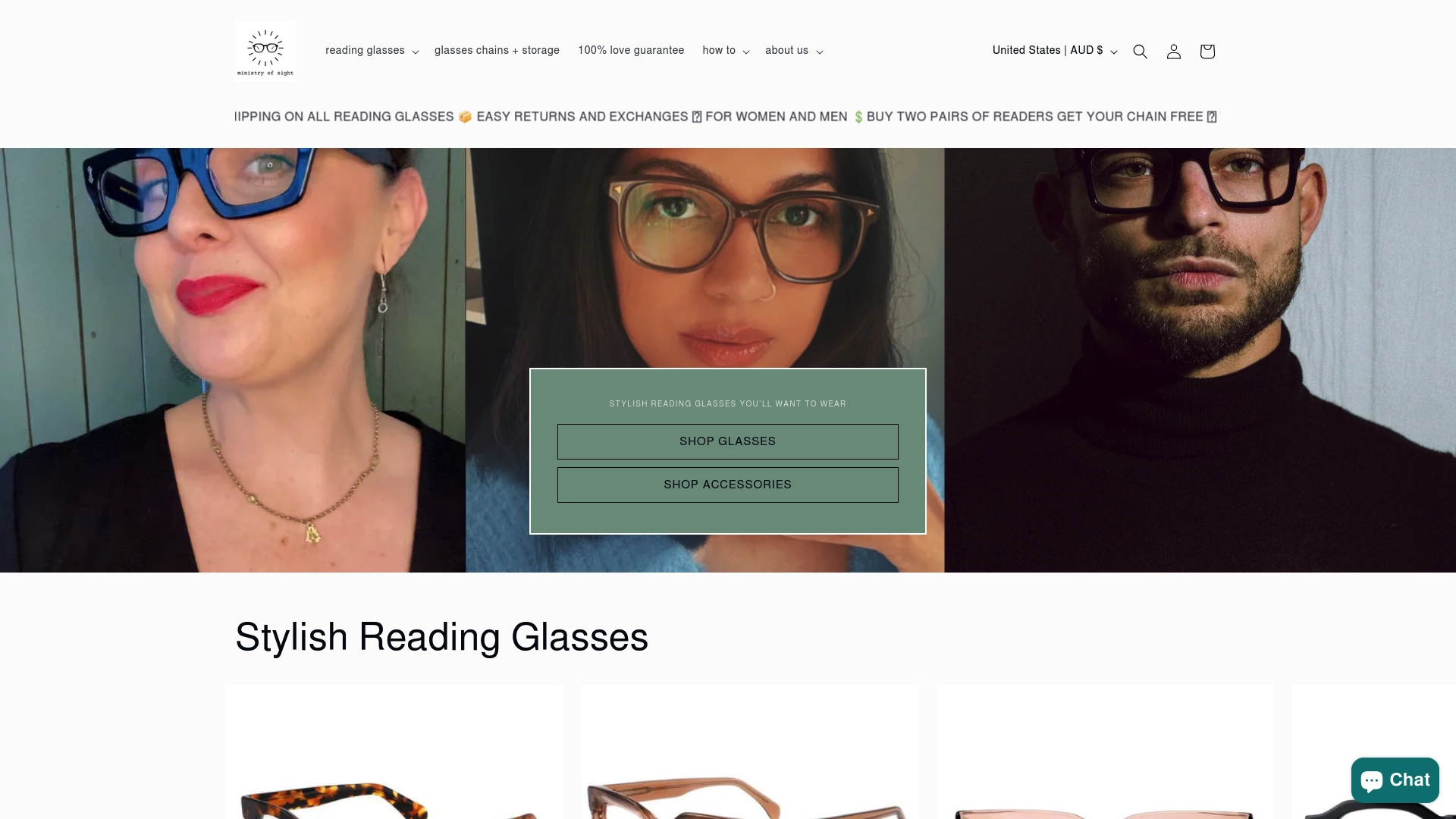
Find the perfect pair crafted for Australian men who want to look sharp at work and relaxed on weekends. Browse now at ministry of sight or explore frame options to Stack Your Style today. Start your transformation and enjoy both comfort and style every time you put your glasses on.
Frequently Asked Questions
What factors should I consider when choosing reading glasses for my face shape?
Consider the overall proportions of your face, including the width of your forehead, cheekbones, and jawline. Each face shape—such as round, square, oval, rectangular, and triangular—has frame styles that can enhance your features.
How do I determine the right frame material for my reading glasses?
Frame materials such as metal, acetate, and lightweight composites impact comfort, durability, and style. Metal offers a classic look and strength, while acetate allows for vibrant colours and lightweight comfort. Consider your lifestyle needs and aesthetic preferences when selecting the material.
What types of lenses are best for men over 40?
Multifocal and progressive lenses are ideal for those experiencing age-related vision changes, providing seamless correction for different distances. Single vision reading lenses are also suitable if your focus is mainly on closer objects.
How can I ensure my reading glasses fit comfortably?
Check that frames rest symmetrically on your face without sliding or causing pressure points. They should fit comfortably at the bridge of your nose and allow for slight movement without significant shifting. If needed, seek professional adjustments for the best fit.
